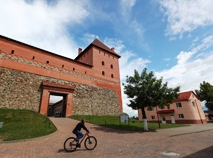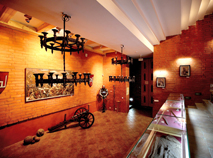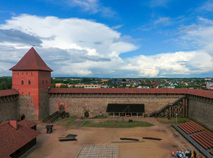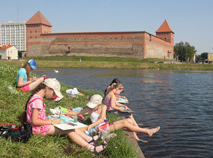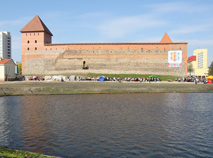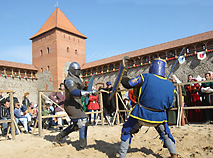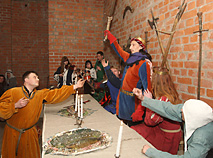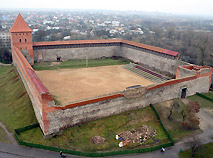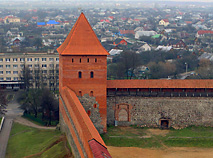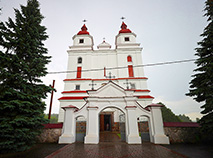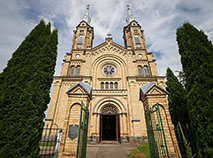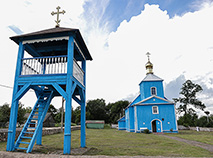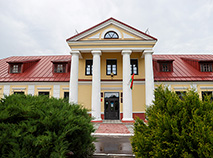Lida Castle
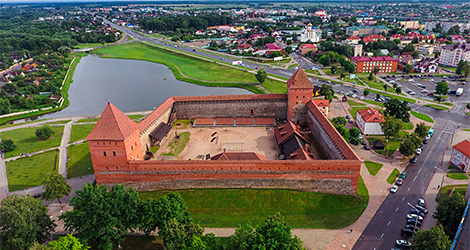
Lida Castle. The Grodno region
Lida Castle is a unique specimen of defense architecture of the 14th century. It was one of the first stone castles of the Grand Duchy of Litva (Lithuania) on the Belarusian lands. It also became a prototype of the world-famous Mir Castle, which was built two centuries later by Duke Yuri Ilyinich, the governor of Lida.
Another interesting fact is that Lida Castle and the legendary Krevo Castle, which survived in a much wore state, are two examples of castels, a certain type of defensive castles in Belarus. In total, there were four castles of this type in the Grand Duchy of Litva (Lithuania): Kovno (Kaunas) Castle, Krevo Castle, Lida Castle and Medininkai Castle.
History of Lida Castle
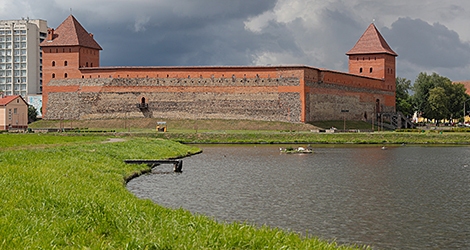
The town of Lida lies 112km north-east of Grodno in Grodno Oblast. It is home to medieval Lida Castle, a remarkable specimen of defense architecture of the 14th century.
In 1323 Grand Duke Hiedymin of the Grand Duchy of Litva (Lithuania) started the construction of Lida Castle. The mighty fortress served as a strong stronghold on the way between Novogrudok and Vilna (the first and second capitals of the Grand Duchy) on the border of Slavic and Lithuanian tribes. It was built on a sand hill surrounded by the marshy banks of the Lidea and Kamenka rivers and a moat connecting these rivers and separating the castle from the town.
Later, Lida Castle was owned by Grand Dukes Keistut, Alhierd, Jahajla, Vitaut, Duke Karybut and Vaidyla. The castle hosted state events over the years. Lida Castle was part of the line of defense Novogrudok - Krevo - Medininkai - Troki against the crusaders.
During its history, the castle withstood many battles and sieges. In the 18th century, it lost its strategic importance and began to gradually to fall into decay.
In 1891 the central part of Lida was badly damaged in a fire. The residents of Lida began to use stones and bricks from the castle walls to repair fire-damaged houses. But also they use them for sale... Some time afterwards the information about this reached the Imperial Archaeological Commission. An inspector came to the town and after his report the Commission forbade to touch the walls of the ancient monument.
At the beginning of the 20th century, Lida Castle was fortified. In 1909-1910 the Imperial Archaeological Commission ordered to repair the western, northern and southern walls of the castle. In the 1920s, when Lida was part of Poland, the castle was also slightly restored. The courtyard hosted a tent circus or a menagerie in summer and an ice rink in winter.
In the post-war Soviet period, many efforts were undertaken to conserve the valuable architectural monument and preserve its history but in the mid-1990s they came to a halt due to the lack of funding.
The true revival of Lida Castle began only in 2006. The restorers sought to return the 14th century looks to the castle. The walls and the southwestern tower were gradually restored. A wooden gallery with new cantilever beams and parallel bars, tile-covered connected the towers. The castle courtyard was filled with sand and rubble.
Lida Castle, like Mir Castle, is under state protection.
Lida Castle today
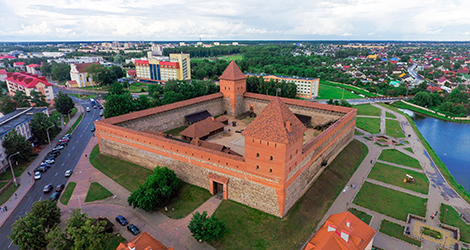
Today Lida Castle is an all-season tourist attraction, drawing thousands of visitors every year.
Its north-eastern tower houses the exhibition Lida Castle. Historical Events and Figures; the south-western tower - Pages of History. From the 14th Century...
Lida Castle hosts various displays of the exhibits from private collections and international exhibition projects. There is a souvenir shop selling handicrafts made in different parts of Belarus.
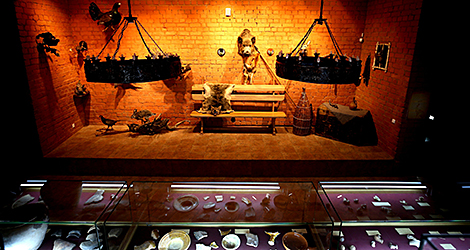
The main attraction of the town is the cultural and tourist project Castle Road which runs from May to August. On Saturdays and Sundays citizens and tourists gather at the walls of Lida Castle to enjoy theatrical historical re-enactments, concerts of local artists, arts and crafts exhibitions and exciting workshops from artisans.
The Magic of Fire and Light festival is held in Lida annually within the framework of the Castle Road project and the International Museum Day. The castle serves as the venue for numerous events during the Lida Town Day celebrations and the famous open-air festival of music, food and dance LIDBEER.
The museum also runs the inclusive project Lida Castle for Everyone.
Getting to Lida Castle and where to stay
Lida is 112km from Grodno and a similar distance from Minsk.
The best way to get to Lida is:
-
by car from Grodno and Minsk
-
by rail from Grodno and Molodechno
-
by bus from Minsk and Grodno
Organized tours to Lida are recommended, and can be arranged through one of the tourist agencies in Minsk and Grodno.
Since Lida is quite a small place, there are only several hotels in it. It may be better to stay in a hotel in Grodno and visit the town and castle from there.
Tourist attractions in Belarus near Lida Castle
If you are visiting Lida Castle, other attractions in the town include:
-
St Michael's Cathedral (St Joseph's Church of Piarists, 1797-1825)
-
Exultation of the Cross Roman Catholic church (1770s)
-
Lida Museum of History and Art


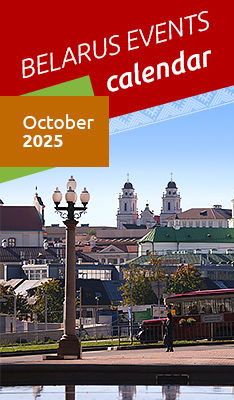




 print version
print version make home page
make home page add to bookmarks
add to bookmarks